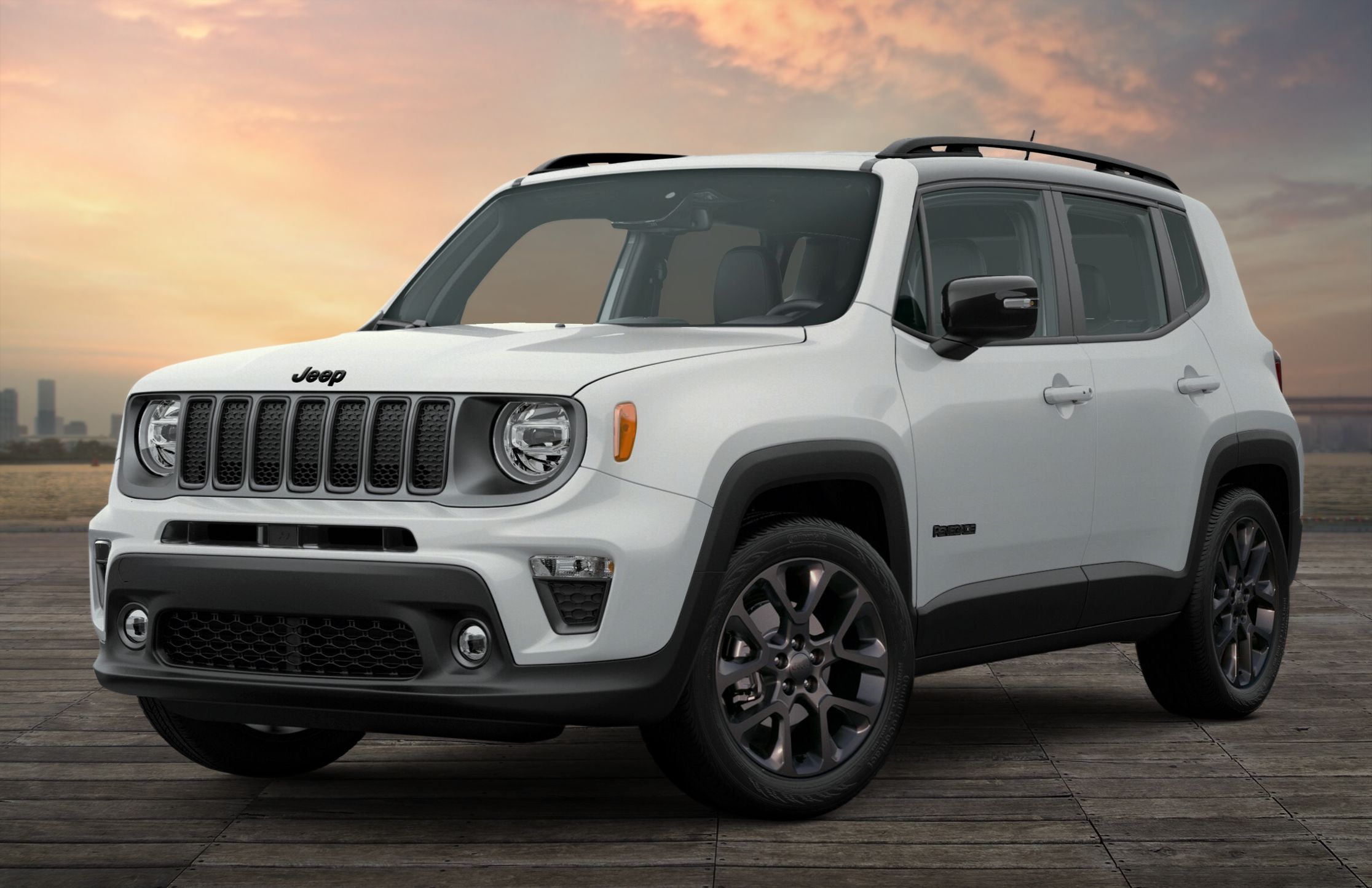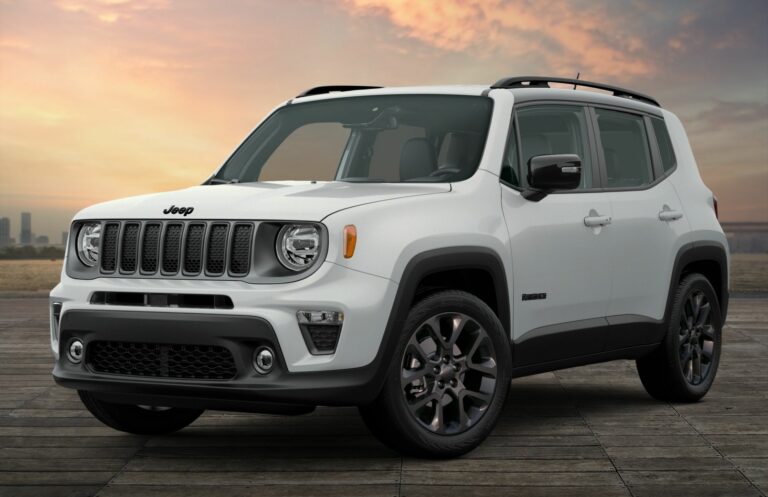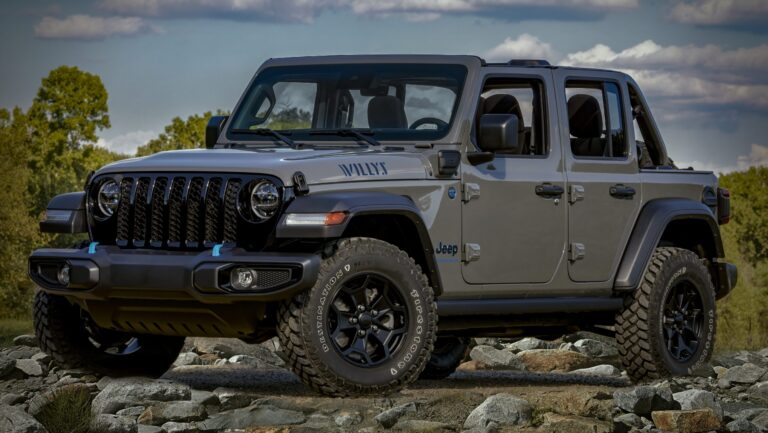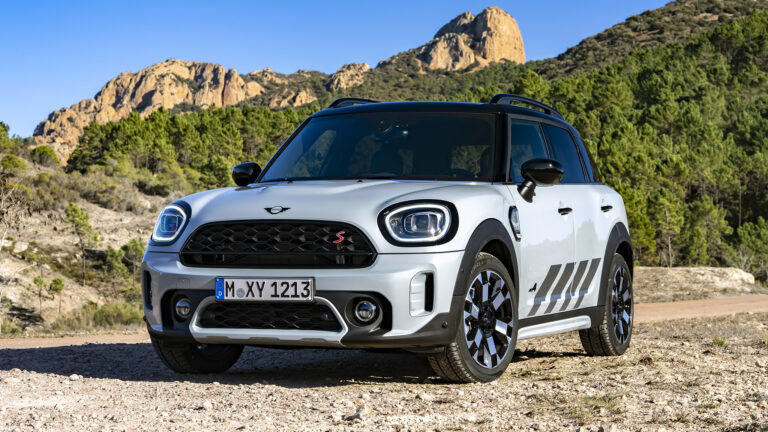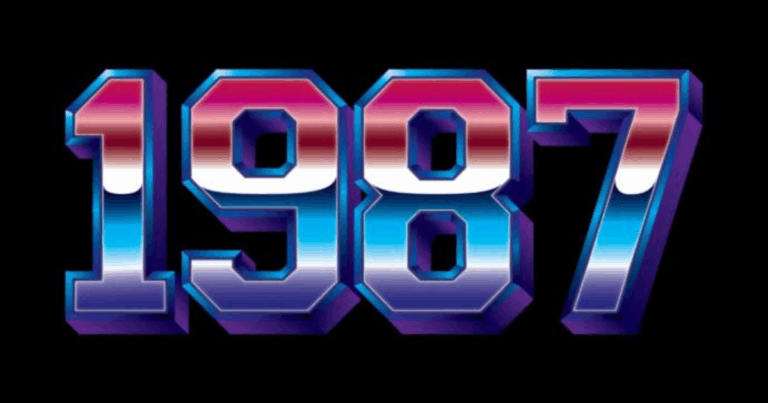Jeep SRT8 Wheels and Tires For Sale: A Comprehensive Buyer’s Guide
Jeep SRT8 Wheels and Tires For Sale: A Comprehensive Buyer’s Guide jeeps.truckstrend.com
Introduction: The Heart of the Beast – Wheels and Tires for Your Jeep SRT8
The Jeep Grand Cherokee SRT8 is not just another SUV; it’s a high-performance, asphalt-devouring machine that blends SUV practicality with muscle car exhilaration. At the core of its formidable performance and iconic stance are its specialized wheels and tires. These aren’t merely accessories; they are critical components that dictate handling, braking, acceleration, ride comfort, and overall safety. Whether you’re a proud SRT8 owner looking for replacements, seeking an upgrade, preparing for different seasons, or simply wanting to refresh your vehicle’s aesthetic, navigating the market for "Jeep SRT8 wheels and tires for sale" requires informed decisions.
Jeep SRT8 Wheels and Tires For Sale: A Comprehensive Buyer’s Guide
This comprehensive guide aims to be your definitive resource, exploring everything from understanding OEM specifications and the benefits of aftermarket options to crucial buying considerations, common pitfalls, and practical advice. By the end, you’ll be equipped with the knowledge to confidently select the perfect wheel and tire combination to keep your SRT8 performing at its peak.
Understanding the Jeep Grand Cherokee SRT8 Wheel and Tire Ecosystem
The Jeep Grand Cherokee SRT8, spanning the WK1 (2006-2010) and WK2 (2012-2021) generations, was engineered with specific wheel and tire requirements to handle its immense power.
WK1 SRT8 (2006-2010):
- Wheels: Typically 20×9 inches with a 5×127 (5×5) bolt pattern and a specific offset (around +34mm to +45mm). OEM wheels often featured a five-spoke design.
- Tires: Commonly 255/45R20 on all four corners, though some owners opted for wider rears. Performance all-season or summer tires were standard.

WK2 SRT8 (2012-2021):
- Wheels: Larger and wider, often 20×10 inches or 20×10.5 inches, maintaining the 5×127 (5×5) bolt pattern. Offsets varied but generally ranged from +30mm to +50mm depending on the specific wheel design and year. Various OEM designs were offered, including the iconic "Spider Monkey" wheels.
- Tires: Staggered setups became more common, with 295/45R20 for both front and rear, or sometimes wider rears like 315/35R20. High-performance summer tires (e.g., Pirelli P Zero) were standard from the factory.

Why these specifications matter:
- Bolt Pattern (5×127): This is non-negotiable. Any wheel you consider must have this bolt pattern.
- Offset: Crucial for proper fitment, preventing rubbing against suspension components or fender wells, and ensuring the wheel sits correctly within the fender.
- Tire Size: Must be appropriate for the wheel width and vehicle, ensuring speedometer accuracy, adequate fender clearance, and optimal performance.
- Load Rating: The tires must have a load rating sufficient to support the heavy SRT8.
- Speed Rating: Given the SRT8’s top speed, tires must have an adequate speed rating (e.g., W, Y, Z).

These OEM specifications are the baseline. When looking for "Jeep SRT8 wheels and tires for sale," understanding them is the first step to making an informed decision, whether you’re buying original equipment or exploring aftermarket alternatives.
Why Buy Aftermarket or Used SRT8 Wheels and Tires?
The decision to purchase new, used, or aftermarket wheels and tires for your SRT8 hinges on various factors, each offering distinct advantages and potential challenges.
Benefits:
- Cost Savings (Used): Purchasing used OEM wheels and tires can significantly reduce costs compared to buying new from a dealership. This is particularly appealing for owners needing replacements without breaking the bank.
- Customization (Aftermarket): Aftermarket wheels offer a vast array of designs, finishes, and sizes, allowing owners to personalize their SRT8’s appearance to their unique taste. You can achieve a look that stands out from the factory aesthetic.
- Performance Upgrades (Aftermarket): Many aftermarket wheels are lighter than OEM, reducing unsprung weight. This can improve acceleration, braking, and handling dynamics. Specific performance tires (e.g., stickier summer compounds, track-focused options) can also significantly enhance grip and cornering capabilities.
- Seasonal Versatility: Having a separate set of wheels and tires (e.g., a dedicated winter set) is highly practical. It allows you to switch between performance summer tires and effective winter tires without constantly mounting and dismounting tires from a single set of wheels, which can be costly and inconvenient.
- Replacements: If one or more of your original wheels are damaged (e.g., bent, cracked, severe curb rash), finding individual used wheels can be a cost-effective solution to restore your vehicle’s integrity.
Challenges and Considerations:
- Authenticity and Quality (Used): When buying used, verifying the authenticity of OEM wheels and assessing their condition (e.g., checking for bends, cracks, previous repairs) is crucial. Non-OEM replicas can vary widely in quality and safety.
- Fitment Issues (Aftermarket): While aftermarket options abound, ensuring correct fitment (bolt pattern, offset, center bore, brake caliper clearance) is paramount. Improper fitment can lead to rubbing, premature wear, and even unsafe driving conditions.
- Tire Condition (Used): For used tires, inspect tread depth, age (DOT date code), signs of uneven wear, and damage (punctures, sidewall cracks). Tires degrade over time, even with good tread.
- Warranty: New aftermarket products typically come with warranties, whereas used items are almost always sold "as-is," with no guarantees.
- TPMS Compatibility: Modern vehicles like the SRT8 use Tire Pressure Monitoring Systems (TPMS). New or used wheels may or may not include compatible sensors, which will be an additional cost if not included.
Balancing these benefits and challenges is key to making a smart purchase that meets your needs and budget while ensuring the safety and performance of your Jeep SRT8.
Types of Jeep SRT8 Wheels and Tires Available
When you search for "Jeep SRT8 wheels and tires for sale," you’ll encounter a diverse range of options. Understanding these categories will help you narrow down your choices.
Wheel Categories:
-
OEM (Original Equipment Manufacturer) Wheels:
- Description: These are the exact wheels that came on the Jeep Grand Cherokee SRT8 from the factory. They are designed and tested specifically for the vehicle’s performance and structural integrity.
- Pros: Guaranteed fitment, high quality, authentic look, often maintain resale value.
- Cons: Can be expensive new, used sets might have wear or minor damage.
- Examples: WK1 20-inch five-spoke wheels, WK2 "Spider Monkey," "Goliath," or "Black Vapor" 20-inch wheels.
-
Replica Wheels:
- Description: Aftermarket wheels designed to mimic the exact appearance of OEM wheels.
- Pros: More affordable than new OEM, allows for the factory look without the factory price.
- Cons: Quality can vary significantly between manufacturers, may be heavier than OEM, potentially weaker, might not have the same rigorous testing.
- Caution: Always research the reputation of the replica manufacturer.
-
Performance Aftermarket Wheels:
- Description: Wheels from reputable aftermarket brands (e.g., BBS, Forgeline, HRE, Vossen, Enkei, Rays) that offer various designs, finishes, and construction methods (cast, flow-formed, forged).
- Pros: Lighter weight (especially forged options) for improved performance, wider range of aesthetic choices, often engineered for superior strength and durability.
- Cons: Can be significantly more expensive than OEM or replicas, requires careful attention to fitment specifications (offset, backspacing) to ensure compatibility.
- Examples: Lightweight multi-spoke designs, custom finishes.
Tire Categories:
-
High-Performance Summer Tires:
- Description: Designed for maximum grip in warm, dry, and wet conditions. Feature aggressive tread patterns and softer rubber compounds.
- Pros: Excellent handling, braking, and cornering capabilities.
- Cons: Not suitable for cold weather (below 45°F/7°C) or snow/ice, faster tread wear.
- OEM Examples: Pirelli P Zero (WK2 SRT8).
- Aftermarket Examples: Michelin Pilot Sport 4S, Continental ExtremeContact Sport, Goodyear Eagle F1 SuperCar 3.
-
Performance All-Season Tires:
- Description: A compromise between summer and winter tires, offering good performance in a wider range of temperatures, including light snow.
- Pros: Versatile for year-round driving in moderate climates, longer tread life than summer tires.
- Cons: Do not offer the extreme grip of summer tires or the dedicated traction of winter tires in severe conditions.
- Examples: Michelin Pilot Sport A/S 4, Continental ExtremeContact DWS06 Plus, Goodyear Eagle F1 Asymmetric All-Season.
-
Winter/Snow Tires:
- Description: Specifically designed for cold temperatures, snow, and ice. Feature specialized rubber compounds that remain flexible in the cold and aggressive tread patterns with sipes for maximum traction.
- Pros: Essential for safe driving in harsh winter conditions, dramatically improves grip, braking, and control.
- Cons: Reduced performance in warm weather, noisier, typically have a lower speed rating, faster wear in warmer temperatures.
- Examples: Bridgestone Blizzak, Michelin X-Ice, Pirelli Scorpion Winter.
Choosing the right type of wheels and tires depends on your budget, aesthetic preferences, driving style, and the climate you live in.
Key Considerations When Purchasing
Navigating the market for "Jeep SRT8 wheels and tires for sale" can be complex. Here are critical factors to consider to ensure a successful and safe purchase:
-
Condition Assessment (for Used Items):
- Wheels:
- Visual Inspection: Look for curb rash, scratches, chips, and especially cracks or bends. Cracks are deal-breakers.
- Balance Test: If possible, have them spun on a balancer to check for bends. Even minor bends can cause vibrations.
- Repairs: Ask about any previous repairs (welding, straightening). A reputable repair might be acceptable, but it’s a red flag if done poorly.
- Tires:
- Tread Depth: Measure tread depth across the tire. Uneven wear can indicate alignment issues or damage.
- DOT Date Code: Located on the sidewall, this four-digit code (e.g., 2320 means 23rd week of 2020) indicates the tire’s age. Tires older than 6-7 years, regardless of tread, should be viewed with caution due to rubber degradation.
- Sidewall Integrity: Check for cracks, bulges, cuts, or punctures.
- Patches/Plugs: Ask about any previous repairs. Reputable patch/plug jobs are fine for punctures in the tread area, but sidewall damage is unrepairable.
- Wheels:
-
Authenticity vs. Replicas:
- Be wary of deals that seem too good to be true. OEM wheels are expensive.
- Look for OEM part numbers stamped on the inside of the wheel.
- Replicas often lack the same structural integrity or finish quality as genuine OEM or high-end aftermarket.
-
Fitment Specifications:
- Bolt Pattern: Confirm 5×127 (5×5).
- Diameter & Width: Ensure the wheel diameter and width are appropriate for your SRT8 and the tires you plan to use.
- Offset: This is crucial. An incorrect offset can cause wheels to rub against brakes, suspension, or fenders. Research the recommended offset ranges for your specific SRT8 generation (WK1 or WK2) and wheel width.
- Center Bore: The SRT8 typically has a 71.5mm center bore. Wheels should either match this or come with hub-centric rings to ensure a snug fit and prevent vibrations.
- Brake Caliper Clearance: Especially for aftermarket wheels, ensure there’s enough clearance for the large Brembo calipers on the SRT8.
-
Tire Matching (for AWD Vehicles):
- If you have a Quadra-Trac AWD system, it’s vital that all four tires are the same brand, model, and have very similar tread depths. Significant differences in tire diameter can stress the drivetrain and potentially cause damage. If buying a used set, ensure the tires are a matched set.
-
TPMS Sensors:
- Determine if the wheels come with working TPMS sensors. If not, budget for new ones and their installation/programming.
-
Seller Reputation:
- When buying online (eBay, Facebook Marketplace, forums), check seller reviews and ask for detailed photos and videos. Use platforms that offer buyer protection.
- For new items, stick to reputable dealers and tire shops.
-
Budget:
- Set a realistic budget. New OEM wheels and tires are at the high end, followed by new aftermarket, then used OEM, and finally used replicas. Don’t forget to factor in shipping, mounting, balancing, and potential TPMS costs.
By diligently considering these points, you can significantly reduce the risk associated with purchasing wheels and tires for your Jeep SRT8, ensuring you get a product that performs well and keeps you safe.
Where to Find Jeep SRT8 Wheels and Tires For Sale
Knowing where to look is half the battle. Here are the most common and effective places to find "Jeep SRT8 wheels and tires for sale":
-
Online Marketplaces (Used & New):
- eBay: A vast selection of new and used OEM, replica, and aftermarket wheels and tires. Use specific search terms like "Jeep SRT8 WK2 wheels" or "SRT8 Spider Monkey wheels." Always check seller ratings and reviews.
- Facebook Marketplace/Groups: Local listings can save on shipping costs. Search for "Jeep SRT8 wheels" or "SRT8 parts." Join dedicated Jeep Grand Cherokee SRT8 or performance Jeep owner groups, as members often sell their old sets.
- Dedicated Automotive Forums: Websites like JeepGarage.org, SRTForums.com, or GrandCherokeeSRT8.com often have "For Sale" sections where enthusiasts buy and sell parts. These communities can offer more knowledgeable sellers and buyers.
- Craigslist: Good for local deals, but requires more caution regarding scams and quality control.
-
Specialty Wheel & Tire Retailers (New):
- Online Retailers: Websites like Tire Rack, Discount Tire, and others specialize in new wheels and tires, offering a wide selection of aftermarket options and new tires. They often have fitment guides to help you choose compatible products.
- Local Performance Shops: Many local shops that specialize in performance vehicles can order and install new aftermarket wheels and tires. They can also offer expert advice on fitment and performance.
-
Dealerships (New OEM):
- Your local Jeep dealership can order brand new OEM SRT8 wheels and tires. This is often the most expensive option but guarantees authenticity and factory quality.
-
Salvage Yards / Auto Recyclers (Used):
- If an SRT8 has been totaled, its wheels and tires might be available. This can be a very cost-effective option, but requires thorough inspection, as the wheels may have sustained damage in the accident.
-
Direct from Manufacturers/Authorized Dealers (New Aftermarket):
- For high-end aftermarket brands (e.g., BBS, HRE, Vossen), purchasing directly from their website or an authorized dealer ensures authenticity and warranty support.
Tips for Searching:
- Be Specific: Use terms like "WK2 SRT8 wheels," "20×10 SRT8 rims," "Pirelli P Zero SRT8 tires."
- Filter by Location: If you prefer local pickup to avoid shipping costs and inspect items in person.
- Set Price Alerts: On platforms like eBay, you can set up alerts for new listings that match your criteria.
Practical Advice and Actionable Insights
Making an informed purchase for your SRT8’s wheels and tires goes beyond just finding a listing. Here’s some practical advice:
- Do Your Homework: Before even looking, know your SRT8’s exact generation (WK1 or WK2), OEM wheel size, bolt pattern (5×127), and typical offset range. This knowledge is your first line of defense against incompatible options.
- Ask for Comprehensive Photos/Videos: If buying online, request detailed photos from multiple angles, including close-ups of any imperfections, the DOT date code on tires, and any stamped markings on the wheels (part numbers, size, offset). A video showing the wheels spinning slowly can help detect bends.
- Verify, Verify, Verify: Double-check all specifications provided by the seller against your vehicle’s requirements. If anything seems off, ask for clarification or walk away.
- Consider Shipping Costs: Wheels and tires are heavy and bulky. Shipping can be expensive. Get a shipping quote before committing to a purchase, especially from private sellers. Insured shipping is highly recommended.
- Factor in Installation Costs: Unless you’re doing it yourself, budget for mounting, balancing, and potentially TPMS programming. Professional installation is highly recommended to ensure proper fitment and performance.
- Don’t Rush: Take your time. The perfect set might not appear overnight. Being patient can prevent costly mistakes.
- Trust Your Gut: If a deal feels too good to be true, or if the seller is evasive, it probably is. Prioritize safety and quality over a rock-bottom price.
- Seasonal Strategy: If you live in a region with distinct seasons, consider a dedicated set of winter wheels/tires. It saves wear and tear on your performance tires and offers superior safety in cold conditions.
- Post-Installation Checks: After installation, pay attention to any vibrations, pulling, or unusual noises. Get an alignment check, especially if you’ve changed wheel or tire sizes, to ensure even tire wear and optimal handling.
- Regular Maintenance: Once installed, ensure proper tire pressure, rotate tires according to your vehicle’s manual (if non-staggered), and regularly inspect for damage.
By following these practical tips, you can ensure a smooth transaction and enjoy your "new" or upgraded Jeep SRT8 wheels and tires for years to come.
Price Table: Estimated Costs for Jeep SRT8 Wheels and Tires For Sale
Prices for Jeep SRT8 wheels and tires can vary wildly based on condition, brand, whether they are new or used, and current market demand. This table provides estimated price ranges for common configurations and components.
| Item Type | Condition | Estimated Price Range (USD) | Key Features/Notes |
|---|---|---|---|
| OEM WK2 SRT8 Wheel (Single) | New | $700 – $1,200+ | Direct from dealer; exact factory match. |
| OEM WK2 SRT8 Wheel (Single) | Used (Good) | $250 – $600 | Minor curb rash possible; check for bends/cracks. |
| Set of 4 OEM WK2 Wheels (No Tires) | Used (Good) | $1,000 – $2,500 | Common on forums/marketplaces; may have some cosmetic flaws. |
| Set of 4 OEM WK2 Wheels w/ Tires | Used (Good) | $1,500 – $3,500+ | Tires may have limited tread life or be older; check DOT dates. |
| New Aftermarket Replica Wheel (Single) | New | $150 – $350 | Mimics OEM look; quality varies by manufacturer. |
| New Performance Aftermarket Wheel (Single) | New | $500 – $1,500+ | Lighter, stronger, wider range of designs (e.g., forged wheels). |
| New High-Performance Summer Tire (Single) | New | $250 – $500+ | OEM or equivalent performance (e.g., Pirelli P Zero, Michelin PS4S); high grip. |
| New Performance All-Season Tire (Single) | New | $200 – $400 | Balanced performance for varied conditions (e.g., Continental DWS06, Michelin PS A/S 4). |
| New Winter/Snow Tire (Single) | New | $200 – $450 | Specialized for cold, snow, ice (e.g., Blizzak, X-Ice). |
| TPMS Sensor (Single) | New | $30 – $80 | Required for tire pressure monitoring; programming may be needed. |
| Mounting & Balancing (Per Tire) | Service | $20 – $50 | Professional installation cost. |
| Alignment Check | Service | $80 – $150 | Recommended after new wheel/tire installation. |
Note: These prices are estimates and can fluctuate based on location, seller, specific brand, and market demand. Always confirm current pricing before making a purchase.
Frequently Asked Questions (FAQ) about Jeep SRT8 Wheels and Tires For Sale
1. What is the bolt pattern for Jeep SRT8 wheels?
The Jeep Grand Cherokee SRT8 (both WK1 and WK2 generations) uses a 5×127 (or 5×5 inch) bolt pattern. This is a crucial specification that any wheel you consider must match.
2. Can I put SRT8 wheels on a regular Grand Cherokee?
Yes, it’s generally possible, but with important considerations. The bolt pattern is the same, but the SRT8 wheels are often wider and have a different offset (lower offset, pushing the wheel out further) to accommodate the larger brakes and wider stance. You might experience rubbing on inner fenders or suspension components, especially if you use the wider SRT8 tire sizes. Always research specific fitment for your Grand Cherokee model year and consult with a wheel and tire professional.
3. How can I tell if used wheels are bent or cracked?
Visually inspect the wheel closely for cracks, especially around the lug holes and spokes. Look for uneven gaps where the tire meets the rim, which can indicate a bend. The best way is to have them professionally spun on a wheel balancer; a bent wheel will show noticeable wobble. Cracks make a wheel unsafe and irreparable.
4. Are replica SRT8 wheels safe?
The safety of replica wheels varies greatly depending on the manufacturer. Reputable replica manufacturers use quality materials and testing, but others may not. They are generally heavier and might not be as strong or durable as OEM or high-end forged aftermarket wheels. Always research the specific brand of replica wheel and read reviews before purchasing.
5. What tire size should I use for my SRT8?
For WK1 SRT8, 255/45R20 is common. For WK2 SRT8, 295/45R20 is the common OEM size, sometimes with wider rears (e.g., 315/35R20) for staggered setups. Always check your vehicle’s door jamb sticker for OEM tire sizes. If you plan to deviate, consult with a professional to ensure proper fitment, clearance, and speedometer accuracy.
6. Do I need new TPMS sensors when I buy new wheels?
If the wheels you are purchasing do not include working TPMS sensors, or if your existing sensors are old or incompatible, you will need to purchase new ones. These typically need to be programmed to your vehicle after installation, which your tire shop can do.
7. What’s the difference between WK1 and WK2 SRT8 wheels?
While both use a 5×127 bolt pattern, WK2 SRT8 wheels are generally wider (e.g., 20×10 or 20×10.5 inches compared to WK1’s 20×9) and have different aesthetic designs. Their offsets can also vary slightly, so direct interchangeability without checking clearance might not be guaranteed for all models.
8. How old is too old for tires, even with good tread?
Most tire manufacturers and safety organizations recommend replacing tires that are 6 years old or older, regardless of tread depth. Rubber compounds degrade over time due, to exposure to elements, losing flexibility and increasing the risk of failure. The tire’s age is indicated by the DOT date code on the sidewall (e.g., "2320" means the 23rd week of 2020).
Conclusion: Driving Forward with Confidence
Acquiring the right wheels and tires for your Jeep Grand Cherokee SRT8 is a critical investment in its performance, safety, and aesthetic appeal. Whether you’re replacing worn-out components, seeking an aggressive new look, or preparing for varying driving conditions, understanding the nuances of the market for "Jeep SRT8 wheels and tires for sale" is paramount.
From discerning between OEM, replica, and high-performance aftermarket options to meticulously inspecting used items and ensuring proper fitment, every step contributes to a successful outcome. By leveraging the insights provided in this guide – researching specifications, understanding pricing, knowing where to source, and applying practical purchasing advice – you empower yourself to make informed decisions. With the right wheels and tires, your Jeep SRT8 will not only look its best but also deliver the thrilling, confident driving experience it was engineered to provide, ensuring every journey is as exhilarating as the first.

